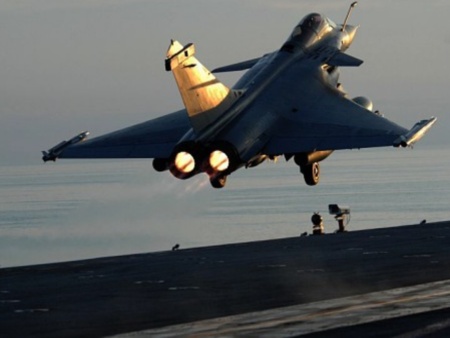#3006
Mensagem
por Marino » Seg Jun 07, 2010 3:43 pm
Brazil & France in Deal for SSKs, SSN
Related Stories: Alliances, Americas - Other, Contracts - Intent,
Engines & Propulsion - Naval, Europe - France, Events, New Systems
Tech, Official Reports, Other Corporation, Submarines
Brazil and France has signed an agreement that involves the
construction of 4 diesel-electric submarines (SSK), plus assistance in
developing and fielding the non-nuclear parts of 1 nuclear fast attack
submarine (SSN). Key specifics, such as the presence or absence of Air
Independent Propulsion technologies, have yet to be made public, but
the terms of the agreement leave the possibility open. Reports
regarding the submarine deal’s value have varied, but the budget is
now set at almost EUR 7 billion.
Brazil is not alone in looking to modernize its submarine fleet. On
the west side of the continent, Chile now fields DCNS/Navantia’s new
SSK Scorpene class as the O’Higgins class. Brazil’s neighbor Venezuela
is also looking to boost its sub fleet, but plans to use Russia’s SSK
Kilo class instead. Brazil’s submarines are seen as a key part of the
country’s new national armaments and defense strategy, which was
released on Dec 18/08. It places a higher priority on protection of
Brazil’s offshore energy reserves, and sees submarines as key players
in that effort. The experience of the 1982 Falklands War, in which
Argentina’s entire fleet was kept in port by Britain’s nuclear fast
attack boat HMS Conqueror, is often cited as instructive.
Financing now appears to be in place, and recent releases explain the
budgets, the timing, and some of the key players in Brazil’s Prosub
program…
* The Boats [NEW]
* Contracts and Key Events [updated]
The Boats
The submarines will be built by Itaguai Construcoes Navais, a joint
venture of Brazil’s Oderbrecht and France’s DCNS. The program is
expected to provide employment for over 700 people in Brazil over a
period of 15 years.
The 4 diesel-electric submarines will be variants of the French/
Spanish Scorpene design, which has also been sold to Chile (O’Higgins
class), India, and Malaysia (Tunku Abdul Rahman class). The coming
design phase will establish the level of Brazilian technology inserts
and development work, as opposed to license construction and
technology transfer.
It will also establish the submarine’s key characteristics. The
stretched AM-2000 version of the Scorpene ordered by India can use
French MESMA air-independent propulsion, allowing the submarines to
remain underwater longer without coming up to snorkel air into their
diesel engines. This is always the most vulnerable period for a
submarine, which can be spotted by radar and other surface
surveillance techniques.
Expected Scorpene costs are currently EUR 415 million (currently about
$592 million) per boat, and the level of customization required will
determine the project’s overall risk profile. This is similar to
India’s budget of about $3.5 billion for an even mix of 3 CM-2000 and
3 AM-2000 Scorpene submarines, or $583 million or so per boat. The 1st
diesel-electric sub will begin construction in 2011, with an expected
in-service date of 2015; submarines #2-4 will enter service in 2017,
2019, and 2021.
According to Brazil’s MDD, the nuclear-powered submarine will be far
larger, at 6,000t compared to the diesel-electric boats’ 1,400-1,800
tonnes. This is significantly larger than France’s existing SSN Rubis
Amethyste class fast attack boats, which weigh in at around 2,730t
submerged, and remains larger than France’s planned 5,300t SSN
Barracuda class. Some of this can be accounted for by the need for
more space, in order to accommodate larger early-stage nuclear
propulsion systems. Even so, the famous USS Nautilus managed to
displace only 3,500 tons. The most similar size analogues to Brazil’s
proposed submarine is the India’s new Arihant class SSBN, which would
raise questions concerning Brazil’s long-term nuclear intentions.
Since nuclear weapons are specifically prohibited by Brazil’s current
constitution, however, a large SSN fast attack vessel is almost
certainly the goal. A 6,000t vessel would fit somewhere between
France’s new SSN Barracuda class, and the USA’s 6,450t SSN Los Angeles
class.
Construction of Brazil’s nuclear boat is expected to begin in 2015,
and it’s expected to enter service in 2021. Cost for the submarine is
pegged at about EUR 2 billion, with EUR 1.25 billion assigned to
Brazil’s indigenous Project Aramar nuclear propulsion/ power program.
DCNS’ role involves assistance with hull technology and construction,
and with non-nuclear internal technologies.
Finally, Brazil aims to set up improved naval construction facilities
and a base capable of handling nuclear submarines at Itaguai, a port
just south of Rio. Brazil’s U209 submarines are currently based out of
Rio de Janeiro, but that densely populated city offers too many
technical and environmental issues to host nuclear-powered submarines.
These construction projects are expected to cost EUR 1.868 billion
(6.9 billion Reals). The nuclear submarine base will be built by a
consortium (Sociedade de Proposito Especifico, or SPE), which includes
Brazil’s Odebrecht (50%), France’s DCNS (49%) and the Brazilian Navy
(1% “golden share,” with veto power).
Contracts and Key Events
The submarines will be built by Itaguai Construcoes Navais, a joint
venture with an initial capital of 10 million reals that will be
responsible for management control. Odebrecht has a 59% interest, and
DCNS the remaining 41%.
May 27/10: DCNS begins cutting steel for the Brazilian Navy’s new
diesel-electric submarines at its Cherbourg facility. The forward half
of the vessel will be built at the Cherbourg centre, while the after
section will be built in Brazil. Submarines 2-4 will be built entirely
in Brazil. DCNS.
Sept 2/09: Brazil’s Ministerio Do Defesa announces [in Portuguese]
Senate approval of the long term budgets for Brazil’s helicopter and
submarine programs. The Prosub program’s budget is EUR 6.79 billion
(about $19 billion Reals, or $9.7 billion) and runs from 2009-2024.
EUR 4.324 billion of this total will be paid for with 20-year
financing from BNP Paribas S.A, Societe Generale, Calyon S.A. Credit
Industriel et Commercial, Natixis, and Banco Santander.
The announcement confirms that the diesel-electric submarines will be
modified Scorpene class boats, with technology inserts and work for
over 30 Brazilian firms. Brazilian manufacturers of technologies like
advanced valves, pumps, water and air purification, etc. can be
expected to see especial benefits. The nuclear-powered submarines will
be far larger, at 6,000t compared to the diesel-electric boats’
1,400-1,800 tonnes. France will transfer the technology necessary for
submarine design and construction, as well as design and construction
of the shipyard and naval base – but not nuclear propulsion
technologies. Brazil’s Ministerio Do Defesa [in Portuguese] | MDD on
JV Agreement [in Portuguese] | DCNS release | MercoPress | MercoPress
re: France’s consolidation as naval supplier.
Aug 25/09: Venezuela’s Latin American Herald Tribune cites the Folha
de Sao Paulo newspaper, and reports that Brazilian President Luiz
Inacio Lula da Silva has approved a strategic plan for the defense of
the Amazon and Brazil’s offshore oil fields that includes the 5-
submarine project, along with military and procurement
reorganizations, and the restoration of Brazil’s arms industry. The
proposal will now be submitted to Congress, Brazilian media reported.
July 21/09: France’s state-owned DCNS Group (DCNS) acquires a stake in
Itaguai Construcoes Navais SA, which will build military naval vessels
(at present, submarines). Source.
April 16/09: Forecast International relays a Defense News report,
which says that financing is secure based on “an authorized French
source” at the 2009 at the Latin American Aerospace and Defense Show.
BNP Paribas, the leading lender in the deal, reportedly asked for a
state-backed guarantee from the French, who provided the guarantee
through the export credit agency COFACE. That covers 70% of the total,
with the other 30% reportedly coming from the Brazilian government.
The report also claims that the deal involves 4 Scorpene Class
submarines, and that the total value is $8.8 bllion. On the other
hand, earlier reports had placed the deal’s value at a similar number
of Brazilian Reals, not dollars, and the selection of the Scorpene
Class has yet to be confirmed in official releases.
Feb 26/09: Brazil’s Folha de Sao Paulo reports that Brazil is seeking
8.5 billion reals (about $3.6 billion) to build 1 nuclear-powered and
4 diesel-electric fast attack submarines. The report also cites
unidentified navy officials, who say that the global credit crunch may
jeopardize the financing required to execute that deal. Bloomberg
News.
Dec 22/08: The purchase agreement is announced. While reports point to
DCNS’s Scorpene Class as the conventional submarines, additional
details in DCNS’ delayed release may contradict this:
“DCNS will act as prime contractor for four conventional-propulsion
submarines to be built by the Joint Venture that will be set up by
DCNS and Brazilian partner Odebrecht. The submarines will be designed
in cooperation with Brazilian teams under DCNS design authority to
meet the Brazilian Navy’s specific needs: They will be ideally suited
to the protection and defence of the country’s 8,500 km coast. The
first submarine is scheduled to enter active service in 2015. DCNS
will produce key advanced-technology equipment in its own plants.”
It is not uncommon for joint ventures of this sort to build an
established design with some local electronics et. al. swapped in, or
to begin with an existing design on the way to a new ship class. A
DCNS joint venture with India is already building Scorpene Class
boats, for instance, while Singapore’s Formidable Class stealth
frigates are one of several ship classes around the world based on
DCNS’ LaFayette Class.
DCNS will also provide design assistance to build “all portions of
Brazil’s new SSN class, except for the nuclear plant.” The key
question will be how much commonality Brazil’s new SSN and SSK boats
will share. If commonality is desired, DCNS has an obvious option at
hand – and it is not the Scorpene. France’s current Rubis Amethyste
class SSNs are scheduled for replacement by the forthcoming Barracuda
class, but the design has already been converted to a conventional
counterpart in the Turquoise class diesel-electric submarine. Using
the Amethyste/Turquoise design as a base would allow Brazilian sailors
to train on existing French nuclear vessels, while delivering a proven
nuclear design, and providing the first export orders for the
Turquoise class.
The third component of the deal involves “prime contractor assistance
to Odebrecht,” as they build the shipyard that will build all 5
submarines and a naval base for the Brazilian Navy. French government
| DCNS | AP | Bloomberg | Reuters UK
Dec 18/08: Brazil releases its national defense strategy, which calls
for greater surveillance capabilities over the amazon, protection of
its deepwater offshore oil reserves, and the rejuvenation of its
defense industrial base. AP report | Estrategia Nacional de Defesa
[Portuguese]
"A reconquista da soberania perdida não restabelece o status quo."
Barão do Rio Branco










